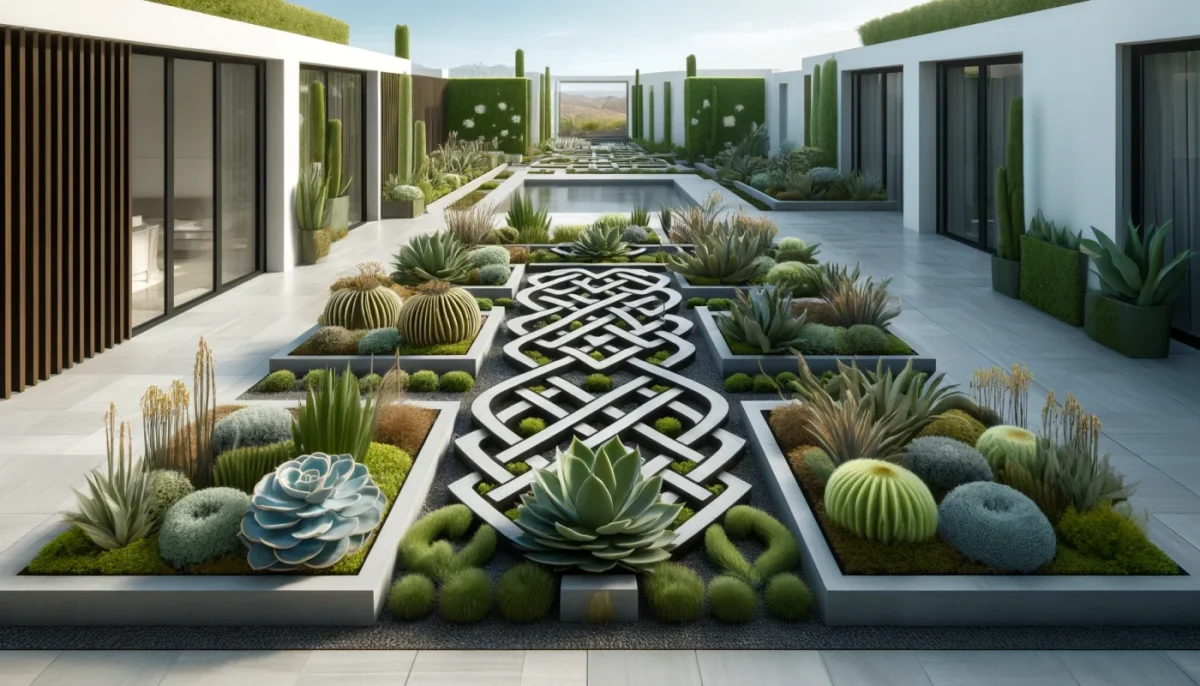
In this post, we look at knot gardens and use the capability of AI to imagine how these ancient garden forms could be brought up to date.
In particular, and with an eye on the changing climate, we have looked at how modern knot gardens might look in dry environments, using succulent and other water-wise planting.
The style and history of knot gardens
Introduction
Knot gardens, an intricate and elegant garden design form, have roots deeply embedded in horticultural history. These ornamental gardens are historically characterised by their complex, interwoven patterns and neatly clipped hedges.
Originating in the late medieval period, knot gardens have evolved through the Renaissance and into the modern era, maintaining their appeal and adaptability to contemporary landscapes.

Historical background
Origins and evolution
Knot gardens trace their origins back to the Elizabethan era in England, where they were first popularised in the late 16th century. Inspired by the formal gardens of Italy and France, English gardeners began creating these intricate designs to showcase their horticultural prowess. The earliest knot gardens were composed of aromatic herbs such as rosemary, lavender, and thyme, which were not only visually appealing but also served practical purposes in the household.
During the Renaissance, the design of knot gardens became more elaborate. Influenced by the geometric patterns seen in embroidery and textile designs, these gardens often featured symmetrical shapes, such as squares, rectangles, and intricate knot-like designs. Contrasting foliage colours and textures further enhanced the visual impact, creating a tapestry-like effect on the ground.
Symbolism and function
Knot gardens were not merely decorative; they often held symbolic meanings. The intertwined patterns represented unity and continuity, while the selection of plants could convey messages of love, faith, or even political allegiance.
In addition to their symbolic significance, knot gardens were practical. They often provided herbs for culinary and medicinal uses and serene space for contemplation and leisure.
Bringing knot gardens into the modern age
Incorporating the historical charm of knot gardens into modern landscapes requires a thoughtful blend of traditional design principles and contemporary materials. Modern hard landscaping materials and xeriscape (drought tolerant) plants can be used to update these classic designs, making them suitable for today’s urban environments.
Hard Landscaping Materials
One approach to modernising knot gardens is to replace traditional plant borders with contemporary hard landscaping materials. For instance, using materials such as gravel, slate, or concrete pavers can create clean, crisp lines that echo the precision of historical knot designs. These materials are not only durable but also low-maintenance, making them ideal for urban settings.
- Gravel and pebbles: These can be used to fill the spaces between the plant sections of a knot garden, providing a contrasting texture and colour. They also aid in drainage, which is particularly beneficial if using drought-tolerant plants in wetter climates.
- Slate and stone: Natural stone materials can be cut into precise shapes to form the borders of the knot patterns. Their organic look harmonizes well with the greenery, while their solidity ensures longevity.
- Concrete or porcelain pavers: For a more industrial aesthetic, concrete or porcelain pavers offer a sleek, modern alternative. They can be arranged in intricate patterns, mimicking the complexity of traditional knot designs.

Xeriscaping with succulents and cacti
Another innovative way to modernize knot gardens is by incorporating xeriscape plants such as succulents, cacti, and other drought-tolerant species. This approach not only conserves water but also introduces a diverse range of textures and colors that can rejuvenate the classic knot garden aesthetic.
- Succulents: With their varied shapes, sizes, and colors, succulents can be arranged in intricate patterns that mimic the detail of traditional knot gardens. Species like Echeveria, Sedum, and Sempervivum are particularly well-suited for this purpose.
- Cacti: Cacti, with their striking forms and minimal water requirements, can add an unexpected twist to the traditional knot garden. Smaller varieties like Mammillaria and Rebutia can be used to outline patterns, while larger cacti can serve as focal points.
- Other Drought-Tolerant Plants: Plants such as agaves, yuccas, and ornamental grasses can provide structure and height, adding a modern flair while staying true to the geometric nature of knot garden designs.
Case studies and examples
Urban rooftop gardens
One successful example of modern knot gardens can be seen in urban rooftop gardens. Here, the principles of xeriscaping and the use of contemporary materials come together to create green spaces that are both beautiful and sustainable. The use of lightweight, drought-tolerant plants reduces the load on building structures and minimizes maintenance.
Public spaces and corporate landscapes
Incorporating modern knot gardens into public spaces and corporate landscapes can enhance aesthetic appeal while promoting environmental responsibility. For example, a corporate plaza could feature a knot garden with stone pavers and succulents, offering employees a serene retreat amidst the urban hustle.
More imagined modern knot gardens
So in the spirit of what we have discussed in this article, I asked AI to come up with some modern knot garden designs to inspire us to consider what might be possible.
Here they are:
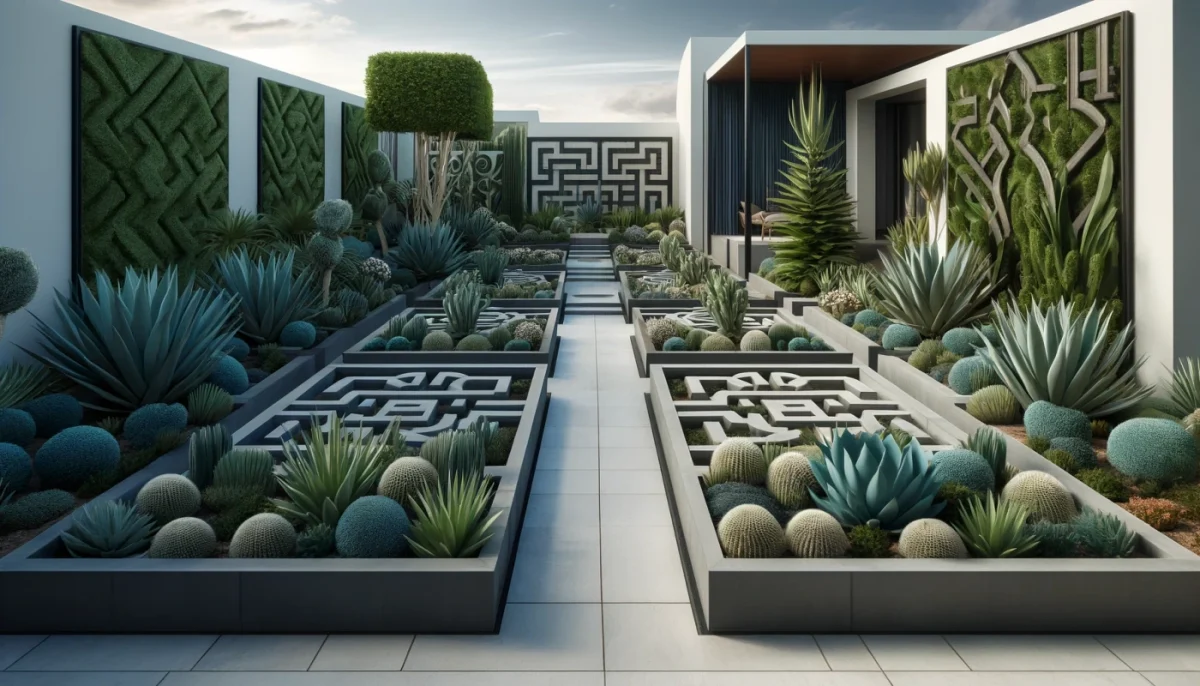
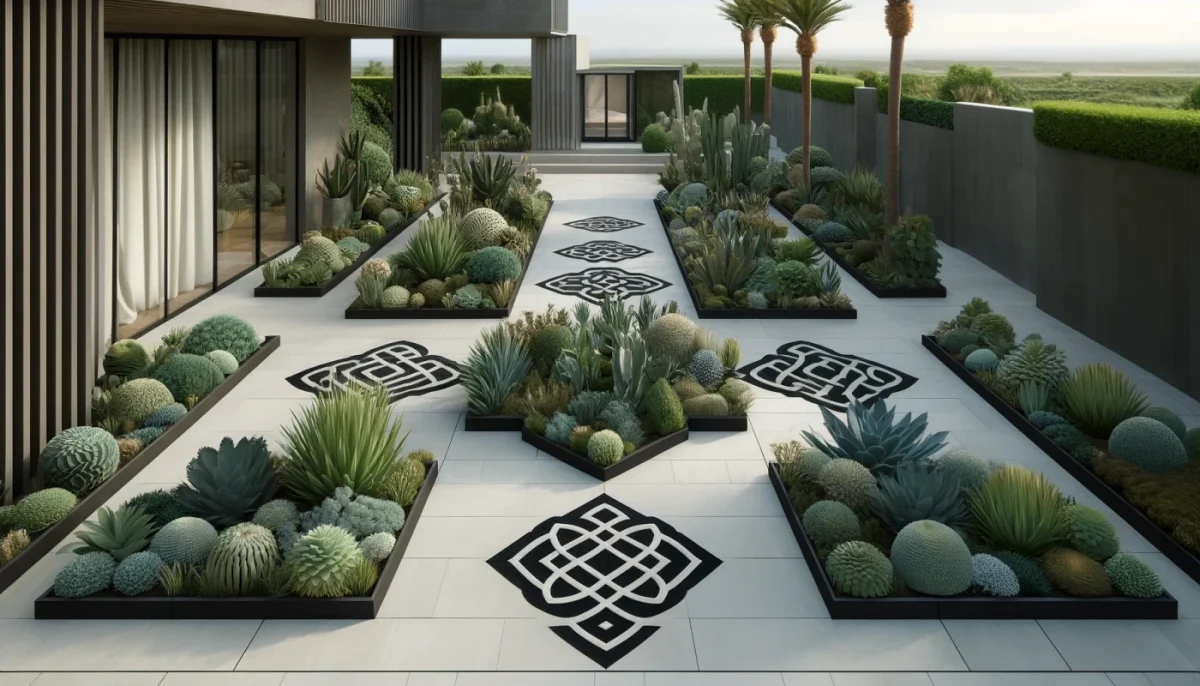



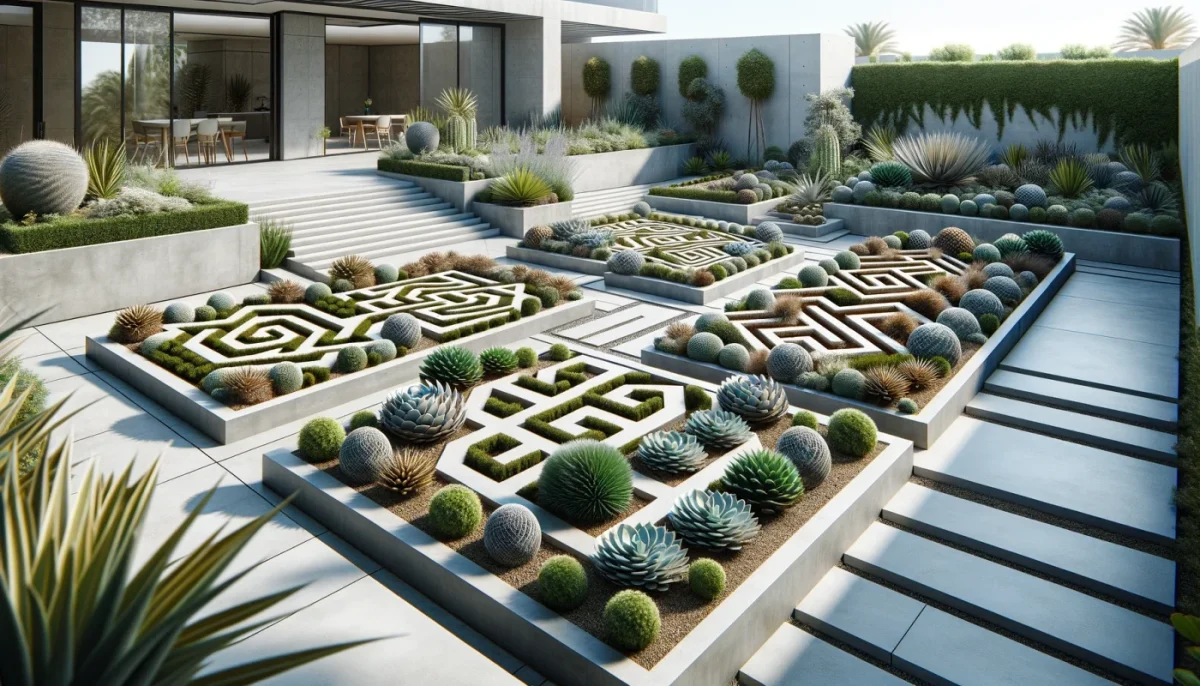
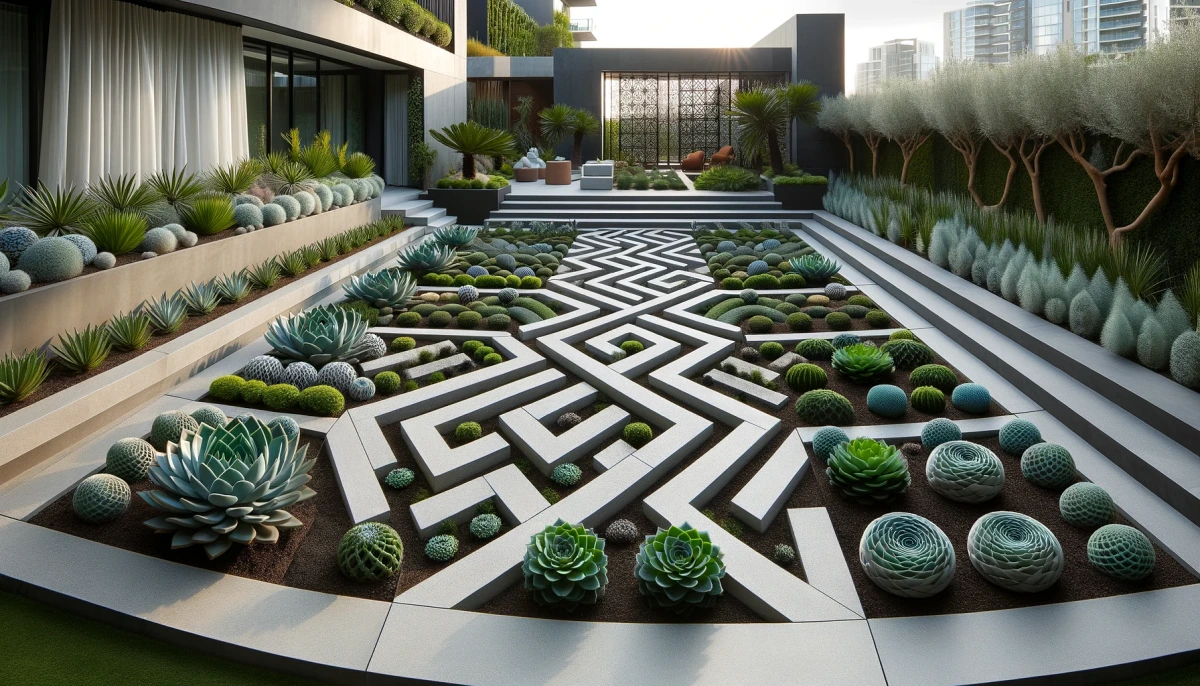



Conclusion
Knot gardens, with their rich history and intricate designs, continue to captivate garden enthusiasts and landscape architects alike.
By blending traditional design elements with modern hard landscaping materials and xeriscape plants, these gardens can be revitalised for contemporary settings. This fusion of old and new preserves the timeless beauty of knot gardens and makes them relevant and sustainable for the future.
Martin Cole has been an avid plant lover and gardener for more than 20 years and loves to talk and write about gardening. In 2006 he was a finalist in the BBC Gardener of the Year competition. He is a member of the National dahlia Society.
He previously lived in London and Sydney, Australia, where he took a diploma course in Horticultural studies and is now based in North Berwick in Scotland. He founded GardeningStepbyStep.com in 2012. The website is aimed at everybody who loves plants or has been bitten by the gardening bug and wants to know more.
Gardening Step by Step has been cited by Thompson and Morgan, the UK’s largest mail order plant retailer, as a website that publishes expert gardening content.

